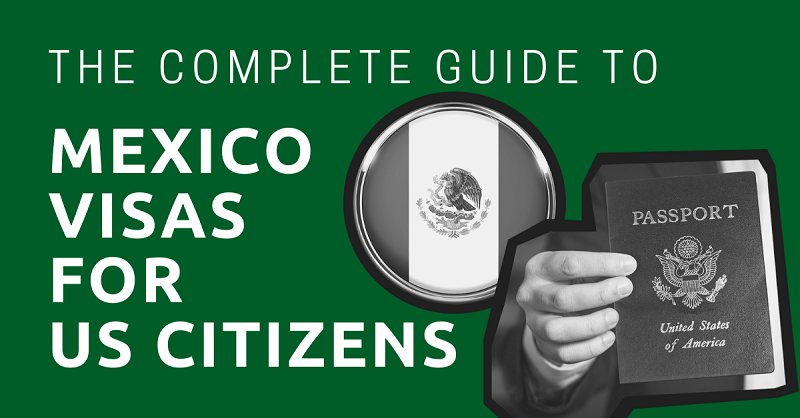
Because of Mexico’s climate, culture, food, cost of living, and close proximity to the U.S., many Americans dream of moving to the country.
Whether you plan to come here for an extended vacation or live here long term, you have to be sure you apply for the right visa.
Having said that, this guide will explain to you each visa option you have, which one is best for your situation, and how to apply for it.
Disclaimer: This article may include links to products or services offered by ExpatDen’s partners, which give us commissions when you click on them. Although this may influence how they appear in the text, we only recommend solutions that we would use in your situation. Read more in our Advertising Disclosure.
Contents
- Good to Know
- Do Americans Need a Visa to Stay in Mexico?
- Visa Options
- Can You Apply for a Visa While in Mexico?
- Where to Find More Information
- Now, on to You
- Latest Guides on Visas in Mexico
Good to Know
Because of Mexico’s low cost of living, million Americans currently call Mexico home. These expats generally fall into a few different categories:
- retirees
- professionals working in Mexico
- dual national U.S.-born children or young adults who moved to Mexico to join their families
However, before you move to Mexico it’s good to know whether you need a visa. The next section answers this question.
Do Americans Need a Visa to Stay in Mexico?
U.S. citizens are allowed to enter Mexico for 180 days without any visa at all. So, if you plan to stay for only a short while, and if you will not work or study while in the country, you won’t need to apply for a visa.
But if you want to stay longer than that, you need to get a Mexico visa.
Visa Options
Your purpose for moving to Mexico will determine the visa that suits you best. You have plenty of options depending on your situation.
In this section, you will discover the different visa options for Americans planning to move to Mexico, along with the requirements for those visas.
Visitor Visas
The Mexican visitor visa is the standard visa you get when entering the country as a tourist. It’s free and granted to U.S. citizens upon arrival with no need for filing applications.
Although you don’t have to apply for a visa to enter Mexico on a visitor visa, you have to fill out a Forma Migratoria Multiple (FMM).
Essentially, this form is an agreement with the Mexican Government stating that you won’t work while in the country and that you’ll stay in Mexico for a maximum of 180 days.
With this visa, you can open a bank account, rent an apartment, and even buy property.
Mexico offers quite a generous length of stay for their visitor visa, so this option is great for digital nomads looking for a short-term stays.
It must be stressed that this standard visitor visa doesn’t let you work for a Mexican company. So, if you plan to work in Mexico, you have to choose a different visa.
Many expats in Mexico live on tourist visas and extend the visa every six months by doing a visa run.
In other words, these expats leave Mexico before the 180 day period ends, either by flying back to the U.S. or hopping the border to Belize or Guatemala.
Then, they re-enter Mexico and hope to be granted another 180-day tourist visa. While this is completely legal, it’s risky because Mexican authorities have started to notice this activity, and some people have been denied entry.
This doesn’t mean that you can’t come back into Mexico after you have spent 180 days there.
However, if you plan to do visa runs every six months and come straight back into Mexico, border patrol may be suspicious.
The increase in tourists doing visa runs is seen as an abuse of the system by the Mexican Government.
They may ask for proof of funds when you enter the border or ask you to prove that you’re not earning income illegally in Mexico.
If you want to work while in Mexico, the next visa is more suitable.
Visitor Visas with Working Privileges
This visa is formally known as a visitor visa with permission to work.
It’s the closest option Mexico has to the working holiday visa you would find in Australia and New Zealand, but there are some key differences.
Essentially, it has all of the same requirements as the standard visitor visa, but you can work for 180 days as well.
This visa is perfect if you have a short-term contract job in Mexico and don’t plan to renew work after six months.
Since this visa is still a visitor visa, you can’t renew the working privileges after six months, so it’s more of a one-off.
On this visa, you can’t work after entering the country. You have to have a job offer before you apply for the work privileges.
The company that wants to hire you must submit the application on your behalf because applicants can’t submit work visas on their own in Mexico.
Once the work permit is processed, you can then enter Mexico and begin working.
If you plan to stay and work in Mexico for longer than 180 days, or if your employer decides to renew your contract, you have to apply for a temporary resident visa.
You can’t renew the visitor visa with working privileges, so a more permanent option is necessary. Let’s look at a few.
Temporary Resident Visas
You have several options for temporary resident visas in Mexico. All of these visas allow you to stay in the country for a full year and can be renewed for up to three years afterward.
Moreover, there are different classifications of the temporary resident visa depending on the activity you plan to carry out while in the country.
However, no matter which temporary resident visa you apply for, you have to prove that you have enough funds to sustain yourself while your visa is valid.
Temporary Resident Visas with Work Permit
The temporary resident visa with work permit is for those who are offered work in Mexico, including a teaching job.
It’s important to note that you must also apply for a work permit when applying for this visa.
In Mexico, a work permit lets you work for the company that sponsors you, but you’ll need a temporary or permanent resident visa in order to legally stay in Mexico for more than 180 days.
If you plan to work in Mexico, you’ll need a job offer before you can apply for a work permit and temporary resident visa.
Unlike some countries that allow those on temporary visas to seek work once they enter the country, Mexico requires you to have a job offer before applying for a visa.
The company you’re going to work for will initially submit the work permit and resident visa in Mexico on your behalf. After that, you have to make an appointment and interview in person at the Mexico consulate in the U.S.
You have to provide some documents and information such as:
- a photocopy of your passport
- your high school or university diploma
- other certificates
- your bank information
- copy of the job offer
- airline itinerary
To be granted a temporary resident visa with a work permit, you also need to prove that you bring in about US$2000 a month or have about US$35000 in savings.
Temporary resident visas aren’t fully processed outside of Mexico. When you apply for a temporary resident visa with a work permit from the U.S., you’re not given a resident card. Instead, you get a paper pre-approval and a sticker in your passport.
Once you enter Mexico, you need to get an official plastic resident card from an immigration office in the country within 30 days. Without the temporary resident card, your visa is only valid for six months.
You can renew this visa for up to three years, after which you need to apply for a permanent resident visa. On this temporary resident visa, you can leave and reenter the country as you please.
When to Apply for the Work Permit?
You should submit the application for the work permit before the temporary resident visa if you have applied for a temporary resident visa based on a job offer.
But you can submit the work permit at the same time or even after you get a temporary resident visa if your residency is based on study or family unity.
Temporary Resident Visas for Business Owners and Entreprenuers
If you open or already own a business in Mexico, you still need permission to work in the country.
You also need to apply for an employer certificate that allows your company to employ foreigners.
After this, you have to apply for a work permit with the National Immigration Institute (INM) and make an appointment similar to the standard work permit.
You can apply for the temporary resident visa and work permit at the same time.
Temporary Resident Visas for Digital Nomads and the Self-Employed
If you’re self-employed or a digital nomad and already make a living outside of Mexico, you can also get a temporary resident visa without having to be employed by a company in Mexico.
To do this, you have to have financial proof showing that you make over US$1,634 a month or show your bank statement with a balance over US$21,213 during the last 12 months.
The application process is similar to other types of temporary resident visas. However, this time you need to apply online, schedule an appointment at the Mexican embassy, and then interview there.
If you pass the interview, you can pick up your passport a few days later with the visa in it. Then, you can turn it into a temporary resident card once you’re in Mexico.
Family Visas
The Mexican family visa is another type of temporary resident visa that allows you to join family members living in Mexico.
This visa is for children, partners, spouses, or parents of Mexican citizens or residents.
Unlike the work visa, which requires a work permit prior to applying, the family visa does not require a work permit.
However, you can’t work unless you get a work permit. With the visa alone, you can enter Mexico and live here. In order to work though, an employer must apply for a work visa on your behalf.
The family visa application requires you to submit your birth certificate or marriage certificate (depending on the situation) and the Mexican ID of the family sponsoring your immigration. The processing time is around one month for this visa.
In order to obtain a family visa, you also need to prove that you have enough funds to support yourself while in Mexico, but the amount of money needed is much less than the work visa – around US$800 in savings.
The reason for the lower amount is because you’re expected to be joining a family member in Mexico.
The family visa has the same conditions as the work visa. So, when you apply for it outside of Mexico, you won’t be issued the official plastic resident card. You will have to get that within 30 days of entering the country.
Also, you can’t renew the family visa, but you can renew a temporary resident visa based on family unity.
The difference between the two is that the first is the stamp in your passport given at the Mexican consulate and the latter is connected to the plastic resident card.
It’s definitely worth noting that you won’t be required to apply for a family unity visa if you only plan to visit your family for 180 days or less.
In this case, the visitor visa is perfectly fine. Just keep in mind that you can’t work or carry out other activities in Mexico that require a resident visa.
Student Visas
If you study in Mexico for longer than 180 days, then you should apply for a temporary student resident visa.
You’ll need to be accepted into a study program in Mexico prior to applying for the visa. You also need to provide evidence of any scholarships, acceptance letters, and the duration of the course or courses.
However, if your study program is for 180 days or less, you won’t need to apply for a student visa.
Unlike many other countries, Mexico allows visitor visa holders to study without a specific student visa.
To land a student visa, as always, you need to prove that you have enough money to support yourself. You’ll need to prove at least US$7,500 in savings or an income of around US$700 a month during your studies.
To work on a student visa, you need to have a job offer and an employer must sponsor a work permit. Once the work permit is granted, you can work freely to support your studies.
Permanent Resident Visas
A permanent resident visa is the best long-term option besides Mexican citizenship.
Unlike a temporary visa, you won’t need to renew a permanent resident visa because, as hinted in its name, it’s a permanent option.
This is a very popular visa among retirees and is even commonly referred to as the retiree visa.
To apply for a permanent resident visa, you need to fall under certain criteria. Here are some scenarios in which you would be eligible for a permanent resident visa.
- you’re planning to retire in Mexico
- you have lived in Mexico for two years on a temporary resident card and are married to a Mexican citizen or permanent resident
- you have lived in Mexico for four years on a work-based temporary resident card
- you have a child, parent, or sibling that is a Mexican citizen or permanent resident
Converting a Temporary Resident Visa into a Permanent Resident Visa
You can apply for a permanent resident visa if you have lived in Mexico for four years as a temporary resident or two years if you’re married to a Mexican citizen or permanent resident.
The process of changing your resident card over is quite easy as long as you remember to apply at least 30 days before your temporary resident visa expires.
You need to apply at the INF, provide them with all of the necessary documents, pay the application fee, and then wait about 15 days for the visa to process.
You’ll then get a permanent resident card, which allows you to live in Mexico indefinitely.
Mexico Retirement Visas
A permanent resident visa is also granted to those wishing to retire in Mexico. There are many American retirees in Mexico enjoying their retirement years in the sun with a margarita in hand.
However, there is some paperwork you need to fill out to get a retirement visa. Information you need to provide includes:
- a cover letter addressed to the Mexican embassy explaining your reason for moving to Mexico and information about your retirement funds including your pension, investments, your date of travel, and your address in both the U.S. and Mexico
- bank statements that prove your total monthly income is around US$3,500 or that you have about US$100,000 in savings.
- birth certificates or marriage certificates that prove a family relationship for dependents
Once this information is filed with the INF, you should receive confirmation of your permanent resident visa within one month.
Note that you need to get your resident card within at least 30 days after entering Mexico.
Can You Apply for a Visa While in Mexico?
For the most part, you must leave Mexico before applying for a temporary resident visa. Generally, the visa must be obtained at a Mexican consulate in your home country.
However, there are a few exceptions to this.
If you apply for a family unity resident visa or if you’re married to a Mexican citizen you aren’t required to apply for the visa outside of Mexico.
You are also able to change a temporary resident visa to a permanent resident visa within Mexico.
Where to Find More Information
When applying for a visa to any country, there are always going to be hurdles.
Collecting all of the documents and information about your visa situation can be quite difficult, especially when there are language barriers involved.
Here are a few places to look for more information about moving to Mexico and the requirements needed:
Now, on to You
Although it may seem like a far-away dream, moving to Mexico really isn’t as difficult as you may think.
Depending on your situation there are a few different visas, both short-term and permanent, to choose from.
As with any big international move, there will be quite a bit of paperwork to sort through and prepare.
However, don’t let this discourage you, because life in Mexico is definitely more than worth it.
Make the jump. You won’t regret it.
Latest Guides on Visas in Mexico
-
 How to Apply for a Mexico Visa on Your Own Successfully 2024-03-29 Applying for a Mexico visa on your own can seem daunting. In this article, we will guide you through everything…
How to Apply for a Mexico Visa on Your Own Successfully 2024-03-29 Applying for a Mexico visa on your own can seem daunting. In this article, we will guide you through everything… -
 Visa Options for Remote Workers in Mexico 2024-03-29 As a remote worker in Mexico, you need to handle the Mexico visa yourself. In this exclusive article, we are…
Visa Options for Remote Workers in Mexico 2024-03-29 As a remote worker in Mexico, you need to handle the Mexico visa yourself. In this exclusive article, we are… -
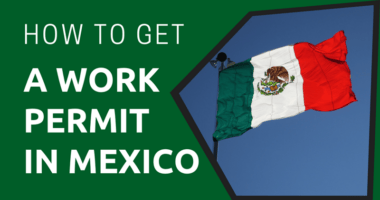 How to Get a Work Permit in Mexico with Requirements (2024) 2024-01-16 Mexico boasts a thriving economy filled with employment opportunities. If you aim to work in a Mexican company, obtaining a…
How to Get a Work Permit in Mexico with Requirements (2024) 2024-01-16 Mexico boasts a thriving economy filled with employment opportunities. If you aim to work in a Mexican company, obtaining a… -
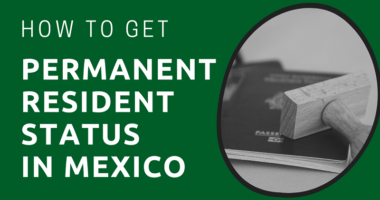 How To Get Permanent Resident Status in Mexico (Update 2024) 2024-02-14 The visa system in Mexico has its unique aspects. To live here long-term, you generally need a temporary resident visa,…
How To Get Permanent Resident Status in Mexico (Update 2024) 2024-02-14 The visa system in Mexico has its unique aspects. To live here long-term, you generally need a temporary resident visa,… -
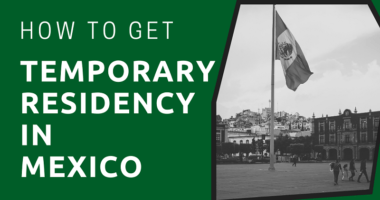 How to Get Temporary Residency in Mexico (2024) 2024-01-08 Mexico has become one of the most popular destinations for remote workers, expats, and all-purpose explorers thanks to its breathtaking…
How to Get Temporary Residency in Mexico (2024) 2024-01-08 Mexico has become one of the most popular destinations for remote workers, expats, and all-purpose explorers thanks to its breathtaking… -
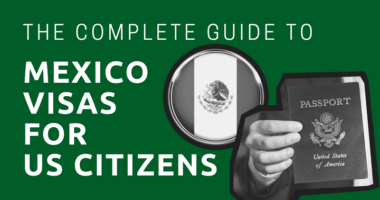 The Complete Guide to Mexico Visas for US Citizens 2023-11-20 Not sure which visa is right for? Thise guide on Mexico visas will help.
The Complete Guide to Mexico Visas for US Citizens 2023-11-20 Not sure which visa is right for? Thise guide on Mexico visas will help. -
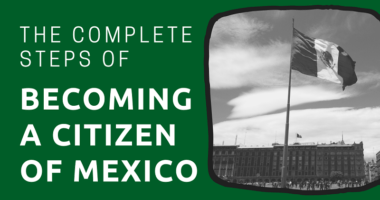 The Complete Steps of Becoming a Citizen of Mexico 2022-12-01 Many foreigners who live in Mexico eventually end up going back to their home countries, but a good number of…
The Complete Steps of Becoming a Citizen of Mexico 2022-12-01 Many foreigners who live in Mexico eventually end up going back to their home countries, but a good number of…


